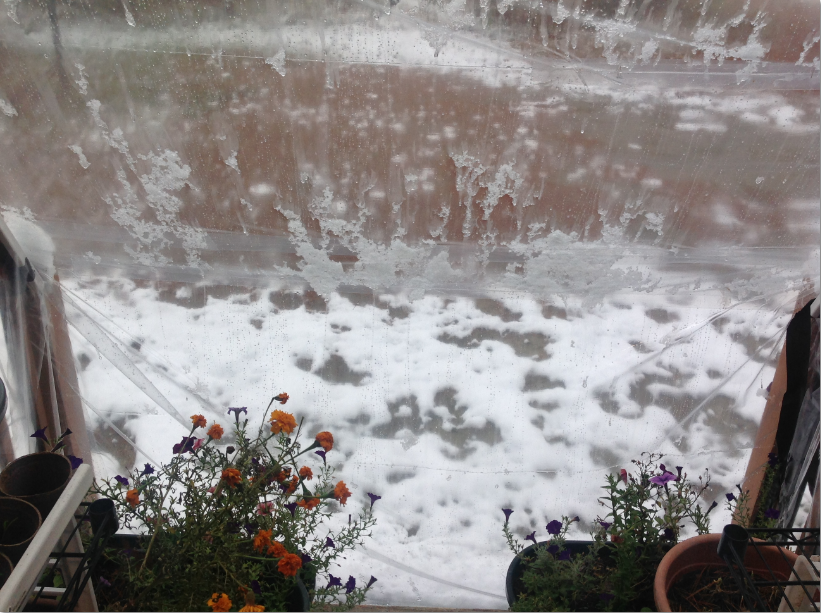(By John)
In the last post, we
discussed the technical aspects of how unheated greenhouses are supposed to
work. In this post, we discuss the
actual construction of the greenhouse.
Once we had
done our research, we then turned to the question of actually turning our small
(6’´6’)
front porch into a greenhouse. The main
criteria were that:
1. The
construction would need to be easy, and
2. The
materials needed to be really, really cheap.
Keeping this is mind, we began our
search. The plastic sheeting had to be
tough, yet still let a large amount of light in. Most of the rolls of plastic were too
opaque. In the end, we ended up buying
three rolls of much clearer four mil insulating plastic intended for covering windows during the
winter. We got the outdoor variety, as
the indoor kind seemed too flimsy. We
also got a few rolls of clear indoor/outdoor tape and outdoor duct tape.
All in all, everything came in at
under $40. We scrounged a few plastic
drain gutters from the basement, and got to work. The total labor (carried out by Dad, my brother Paul, and me) lasted about
three hours.
 |
| The greenhouse from the side. |
 |
| The greenhouse from the other side. |
 |
| The air vent. |
 |
| The greenhouse from the front |






